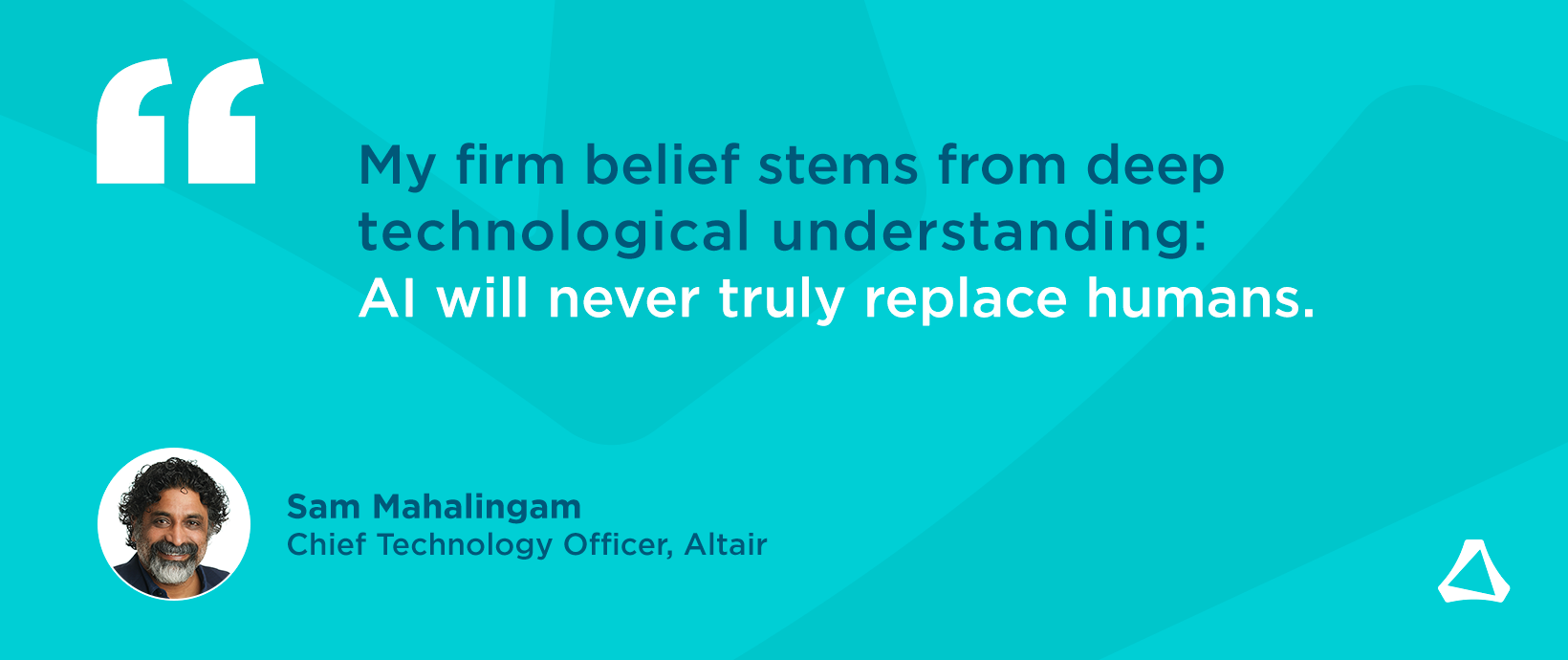How to Get Your Data Scientists to Quit

Some organizations are doing at least one thing right when it comes to managing their data scientists – giving them good reasons to look somewhere else. If data science is such a fantastic job, how else can we explain the massive turnover in the data science job market?
Turnover rates for data scientists are at an all-time high. In fact, a study by 365 Data Science Ltd. shows that the average data scientist will only remain in their job for 1.7 years.
The rampant job dissatisfaction is in stark contrast to the high demand for data scientists, as the Bureau of Labor Statistics predicts a 30-35% increase in employment growth in data science – meaning more than 15,000 job opportunities will be created between 2020 and 2023.
As a data scientist, this almost makes me miss the good old days*, when data scientists were as unique as unicorns. Now, it feels more like a zoo—it’s become a crowded space, with lots of different job titles and roles, and there’s a fierce competition to both hire and retain the data science talent you have.
So what, exactly, is causing data scientists to quit en masse? Let’s find out!
*I of course do not miss the "good old days" of data science. Who wants to go back to code in Perl for natural language processing? I certainly don’t!
Do These Six Things If You Want Your Data Scientists to Quit
Today, data scientists have all the power. The demand for data scientists outweighs supply, and if they’re not happy at their current organization, they can leave. If you’re okay with your data scientists walking out the door, be sure to do these six things.
1. Offer Them Zero Growth Opportunities
There’s a common misconception that data scientists are happy being data scientists forever. That’s what you went to school for, right? To do data science? You must be living the dream!
Wrong.
Good data scientists are all problem solvers at heart, and without a clear career path and fulfilling new problems to work on, there’s nowhere for their ambition to go.
Data science is an ever-evolving space—there are always new tools, platforms, and methods for creating machine learning models and solving business problems. To continue learning, furthering their personal growth, and producing the best results for their organization, it’s important that they’re given the opportunity to attend conferences, get additional training, and work in their preferred environment.
There’s also great diversity in the data science role—it requires skill in statistics, data literacy, computer science, storytelling, presentation, and leadership. Their career paths aren’t clear cut lines; instead, they’re unique journeys based on their expertise.
If there’s no room for data scientists to grow at their current company, and their employers don’t understand how they should be growing, why wouldn’t they take their talent elsewhere?
2. Make No Effort to Understand Their Work
Imagine this: it’s your first day on the job as a data scientist for a global retailer. You sit through a short welcome presentation, meet a few coworkers, and then are given your first task—create a customer churn model to determine red flags for attrition and, ultimately, improve return on investment (ROI).
It’s no small task – and you’ve been on the job for all of three hours. How are you supposed to create a valuable machine learning model if you barely understand the context behind the use case you’re trying to solve for?
While we’re at it, why are data scientists expected to understand business use cases while executives have the luxury of not understanding (and therefore not trusting) the work that their data scientists do?
This lack of effort to understand data science is a symptom of the ever-widening skills gap between “business people” and “data people.”
Discounting more advanced methods and not honoring the conclusions of complex deep learning models simply because executives don’t understand the process behind it leads to disgruntled data scientists feeling like they’re wasting their time. And, it’s why upskilling stakeholders and business leaders is more important than ever.
3. Waste Their Time with Grunt Work
If you ask any data scientist, “Why did you become a data scientist?” not one will answer, “Because I want to spend all day doing data prep!”
A recent Medium article from a former data scientist proves this point, claiming that he only spent 10% of his time building models—and that’s what he wanted to spend 90% of his time doing. He shared that data science was, frankly, more boring than he thought it would be, and not half as challenging or fulfilling as he expected.
You didn’t hire data scientists to spend their entire day in Excel, rearranging cells and columns or doing simple analysis with antiquated methods. So why are they spending so much of their time on avoidable, tedious data prep and cleaning?
Most of a data scientist’s time is spent organizing messy data, wrangling, aggregating, cleaning, running SQL queries, and waiting for code to be executed. It leaves many data scientists feeling like data janitors rather than sparkly unicorns.
Don’t get me wrong: Data prep is a vital part of data science. Just don’t make your team isn’t only doing data prep.
4. Don’t Provide Them with Any Data Science-Specific Tools
Data scientists are tinkerers, and tinkerers work best when they’re given the best tools on the market.
Sadly, few companies invest in good data science tools. Some don’t invest in any at all. Not having a dedicated data science platform makes it difficult to work through existing firewalls and get models into production.
Even when organizations do have a program in place, if it doesn’t offer sufficient training (similar to RapidMiner’s certification-based Academy), it gives them no way to apply and grow their skills within the platform. Others won’t invest in supplemental data engineering tools, leaving data scientists to clean up unstructured, inconsistent data – and remember how data scientists feel about grunt work?
Only giving data scientists barebone tools to do their jobs signals that their employer isn’t willing to invest in a technical environment that would help them produce their best results.
5. Have Them Rely on Manual, Inefficient Methods and Software
Or, what’s just as bad, don’t care about their tools at all. Let them use whatever they like to use. This causes most of their models to stall and never make it into production because there’s no streamlined, accepted, and robust way for doing so given the dozens of different authoring modalities. And that means their work has no impact.
The tool zoo is bigger than just the tools used for data prep or modeling. Providing data scientists with software that speaks their language is key to peak productivity, but you’d be surprised at the number of data scientists still taking time out of their day to edit PowerPoint slides to present their output.
Not having a streamlined way to display and present data science results creates even more unnecessary hurdles between business and data experts.
Another issue many data scientists lament is a lack of version control in their organization—the number of businesses still sharing code over email, Google Drive, or SharePoint is startling. Not only is this code less secure, it’s also prone to being overwritten by fellow developers, meaning their hard work could be altered or lost.
If their work is less secure and takes twice as long as it should, chances are they won’t feel 100% fulfilled.
6. Pay Them Less Than What They’re Worth
Even if you love your job, your coworkers, and your company, wouldn’t you consider leaving if your employer was underpaying you?
Unfortunately, data scientists run into low pay all too often. A LinkedIn post from founder of ML library PyCaret highlighted a particularly telling example—an “entry level” data engineer job posting asking for 6+ years of experience – and paying just $62,000 USD per year.
Not only is the salary way too low for someone being asked to design and develop impactful tools, implement a robust technical framework in the organization, and present their solutions to stakeholders; it also demonstrates that the prospective employer has no idea what these skills are worth. Would you really want to work for someone who doesn’t understand the value of your contributions?
Some data science candidates will filter low salaries out of their job search, and your posting won’t even be seen. Others will look, roll their eyes at the discrepancy between what’s being asked of them versus what’s being offered to them, and will choose to take their time (and their expertise) elsewhere.
Wrapping Up
In a recent KDnuggets article, self-taught data scientist Natassha Selvaraj shares that she quit an internship after just one week because the job didn’t reflect the skills she spent years of her life learning.
The message is clear: if employers don’t invest in their data scientists, provide them with a technologically advanced work environment, and allow them to contribute to high-value projects, they’ll leave. No one wants to watch all their organization’s unicorns prance away to greener pastures.




